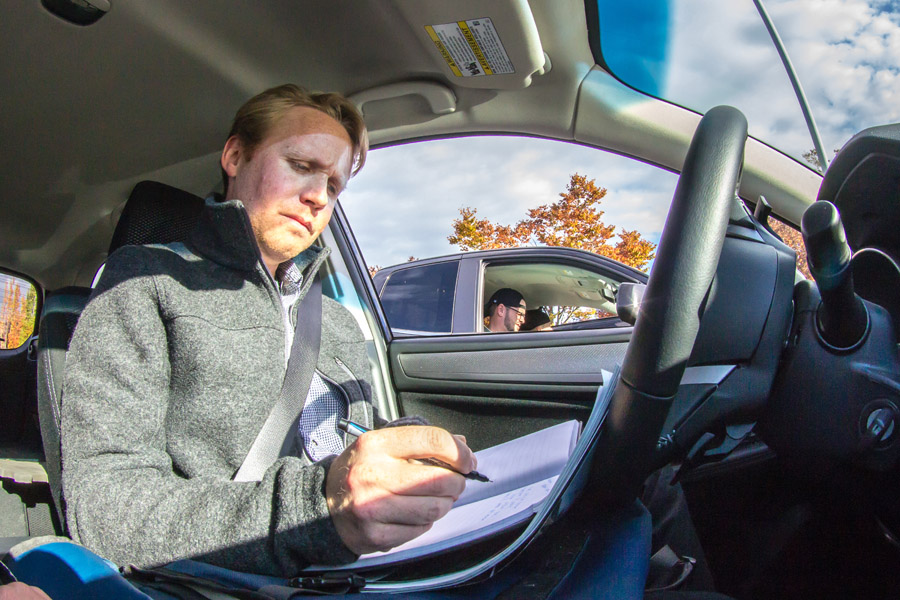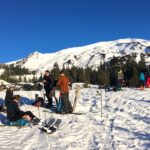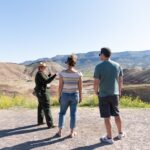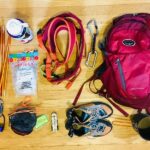The state’s director of outdoor recreation on fixing overcrowded campsites and boosting private-lands vacationing.
Oregon’s outdoor recreation community has a new voice. In June the state became one of eight to appoint a director of outdoor recreation.
Encompassing transportation, manufacturing, retail and tourism, Oregon’s burgeoning outdoor recreation economy generates $16.4 billion each year and provides 172,000 jobs. Large manufacturers including Columbia Sportswear, Leatherman Tool Group and Metolius Climbing call Oregon home. Sixty-nine percent of Oregonians recreate outdoors in some fashion.
Yet big challenges loom. To name a few, the campsites are clogged, rural counties foot the bill for finding lost Portland hikers and the outdoor workforce lacks diversity.
Cailin O’Brien-Feeney, 34, is here to keep everyone happy and work toward an even more prosperous recreation economy. Not long after walking into the office, he left to crisscross the state, connecting its varied outdoor interests. We asked him about his first months on the job. (Responses have been edited for brevity and clarity).
How did your background prepare you for this job?
For the past 15 years, all my jobs have been either in the outdoors or for the outdoors. I led trips for various river outfitters and the National Outdoor Leadership School. For the past few years, I’ve been running state and local policy work for the Outdoor Industry Association. That gave me the chance to work with companies on both business and policy issues, and local ballot initiatives. It was an ideal launching pad.
Few states have funded a position like yours, and we’re not sure exactly what you’re going to do. What’s a day on the job look like?
I’ve been meeting with Travel Oregon, Business Oregon, the Oregon Department of Fish and Wildlife, the Forestry Department, the Marine Board. Because the vision of this office is to grow the economy and expand outdoor recreation opportunities around the state, that sort of outreach is critical. It’s been a lot of road time so far.
What are the major outdoor recreation challenges you need to solve?
There’s some frustration from the public about the number and variety of passes and permits. Many of our state agencies and local and federal partners that provide outdoor recreation are strapped for cash. There’s increasing recreational demand and an imperfect funding system to support it. Longer term, I’ll dig into that issue.
We can also better support our search-and-rescue operations. Often it’s rural counties that end up with a bill. It’s harder for recreation to be seen as a top priority if it’s a drain.
Then there are questions about recreational liability. What protections are in place for outfitters and guides, for the general public, for land managers? There has been some legislative work in the past couple of years to update those statutes, but a lot of people feel that’s still open. We still want to encourage a sense of adventure, not be a state filled with signs and guardrails. There’s a need to reinforce personal responsibility and a stewardship ethic.
It seems you have to book campsites a year in advance now. What do you see as potential solutions for overcrowding on public lands?
There’s more we can do both on the funding and liability sides if we want to encourage private-lands recreation, on timber lands, for example. That system is complicated, but I think there’s a middle ground. Private landowners are interested in providing that opportunity if we can pay for the access.
There’s also an unmet need for more developed recreation. A developed campground, a whitewater park or a hardened trail, for example. People can be welcomed into an area and leave a smaller impact.
 Cailin O’Brien-Feeney. Photo by Jason E. Kaplan
Cailin O’Brien-Feeney. Photo by Jason E. Kaplan
What are the most pressing concerns for the outdoor recreation business community?
One is the desire for better data and more recognition of how important outdoor recreation is for our state. We have an idea of specific sectors like tourism, or manufacturing, but not all facets of the outdoor recreation world. I’m working on a project with Travel Oregon to provide that information down to the county level. Some of that will come out next year in the statewide outdoor recreation plan. There’s a lot of organizing going on in the business community right now to better share information at the local level, to figure out what their policy asks might be.
I’m also excited by workforce training to help people get into outdoor recreation careers. I’ve had a winding trail to get here. I had a great education but didn’t know the outdoor recreation industry was an industry when I was growing up. There’s great work already in place at our state universities, but are we reaching the students we need to reach from all backgrounds, and preparing workers with the skills and experience Oregon employers are demanding?
Hunters, ranchers, loggers and others from natural-resource industries viewed this office with skepticism. How have those rural stakeholders responded to your work so far?
I haven’t heard a lot of specific concerns so far about outdoor recreation displacing other uses. One way I’ll make sure that dialogue remains at the center of these discussions is in building a formal advisory council that will guide the work of the office. I’ll make sure there is representation from traditional resource industries and rural communities. There is certainly a demand for outdoor recreation in the state, but that doesn’t mean it has to be taking the place of anything else.
You’re still a one-man office. Is that enough?
There is a lot to get done, and hopefully you can hear the enthusiasm in my voice for doing it. It’ll be a matter of prioritizing. There’s tremendous support from Parks and Recreation for this office, and I’m also looking forward to, over the next six months, formalizing that advisory structure. I expect to spend the rest of the year doing initial outreach — hearing people’s ideas and concerns.
How much funding does your office have?
Essentially just operations costs, and then we can fundraise. We also get support from the department through the director’s budget. Some capacity is what Oregonians contribute in their own time to the office. This advisory council will be volunteer-based. The time and effort people are willing to spend will directly impact how much momentum we can generate.
What have you learned from the outdoor recreation offices in other states?
All the state offices of outdoor recreation have agreed to and signed these shared principles, called the Confluence Accords. They cover economic development, conservation and stewardship, workforce training, and health and wellness. That’s a really helpful big-picture guide. I also happen to know all those folks personally and can learn from their experience, good, bad or otherwise.
What’s the plan for the next year or two?
Top priorities right now include the advisory council and a strategic plan for the coming years. I’ll be spending a lot of time with people I haven’t met yet, including elected officials. I’m also keen on moving forward with the economic impact study.
In the future, proposing legislative concepts, providing a report to the legislature and recommending policy that might impact state agencies will be a core part of the office. We don’t have any formal legislative concepts going into 2019 — that’ll be for a future year. But I’ll certainly be spending a lot of time in Salem during the upcoming session understanding the issues.
To subscribe to Oregon Business, click here.







